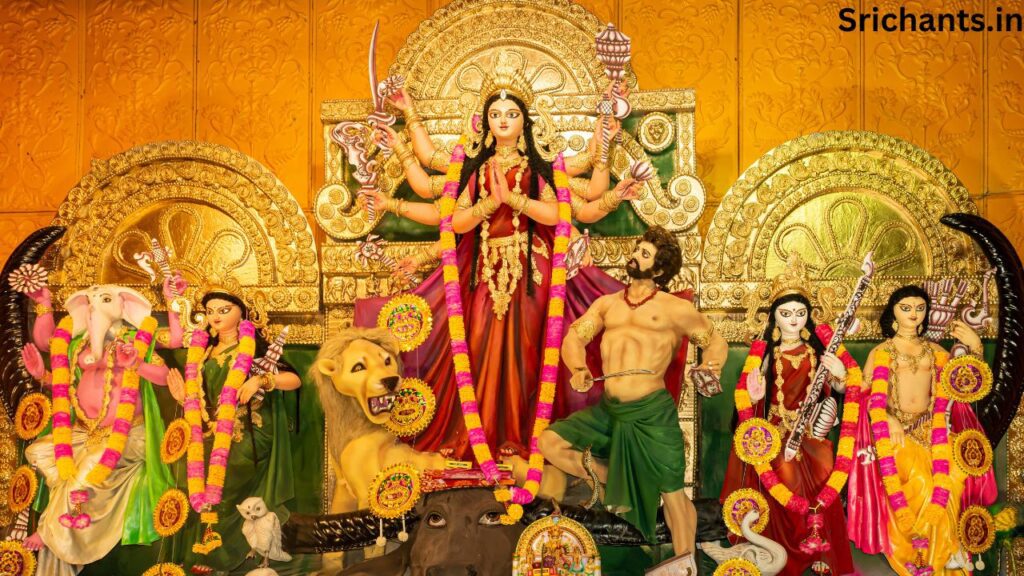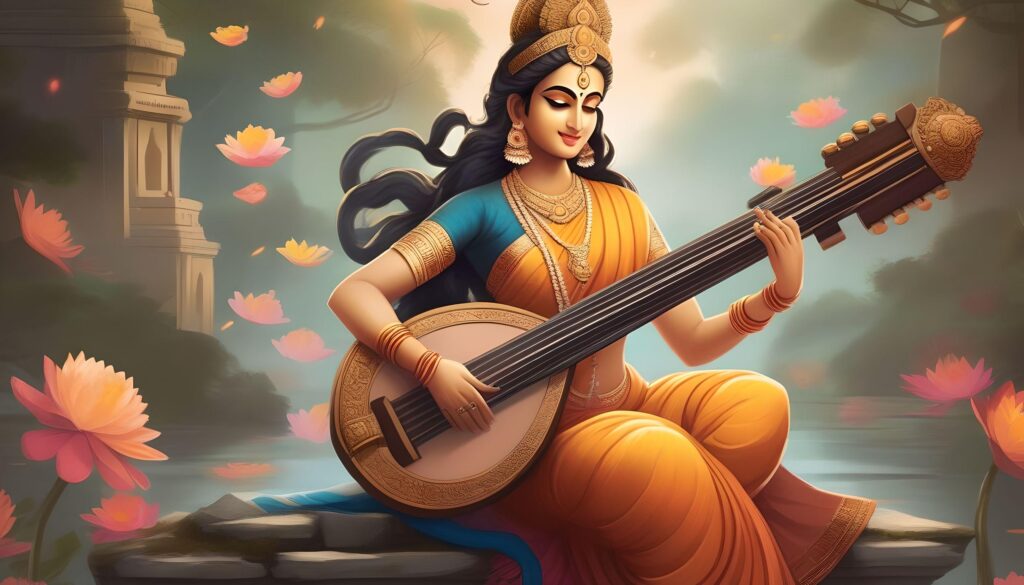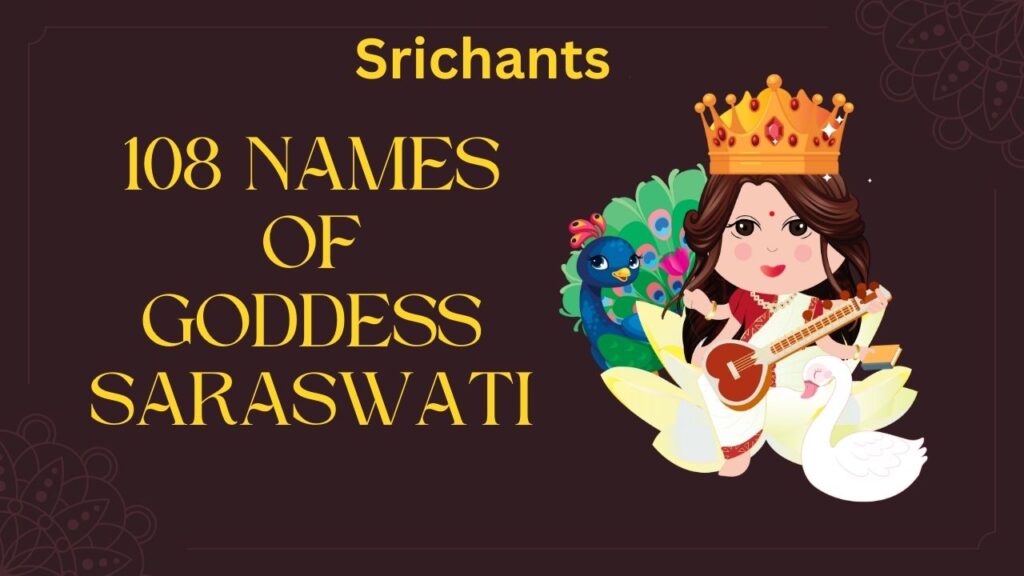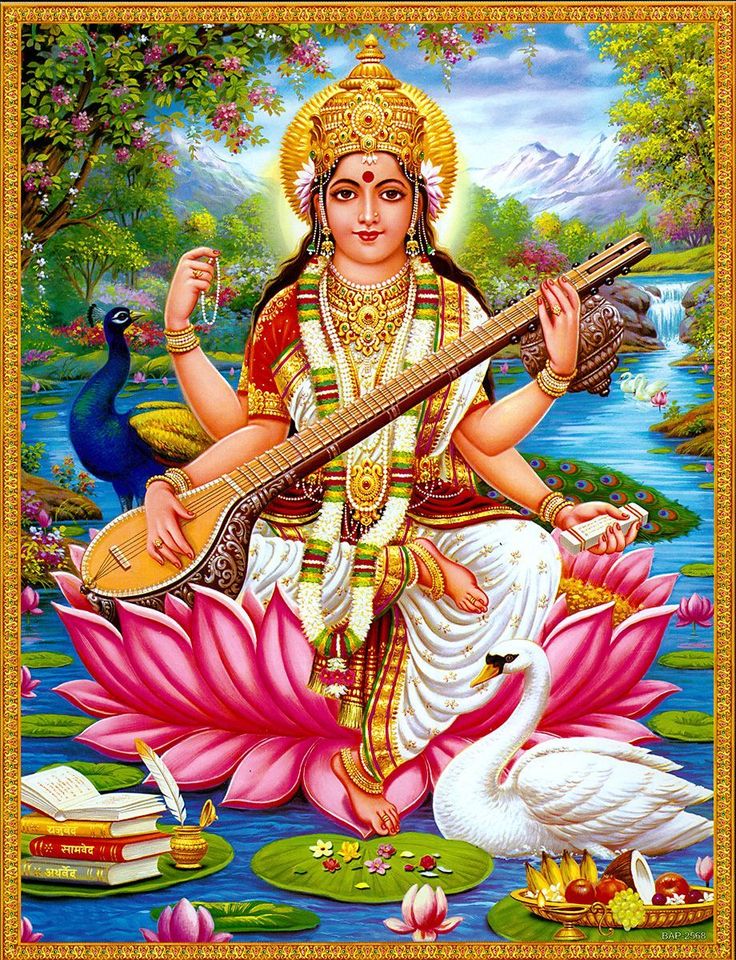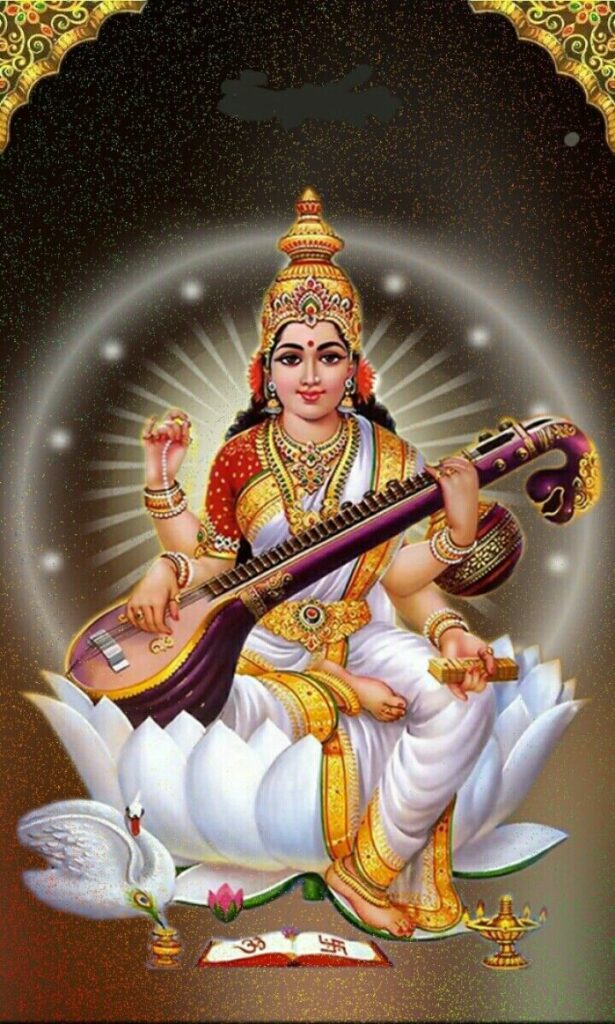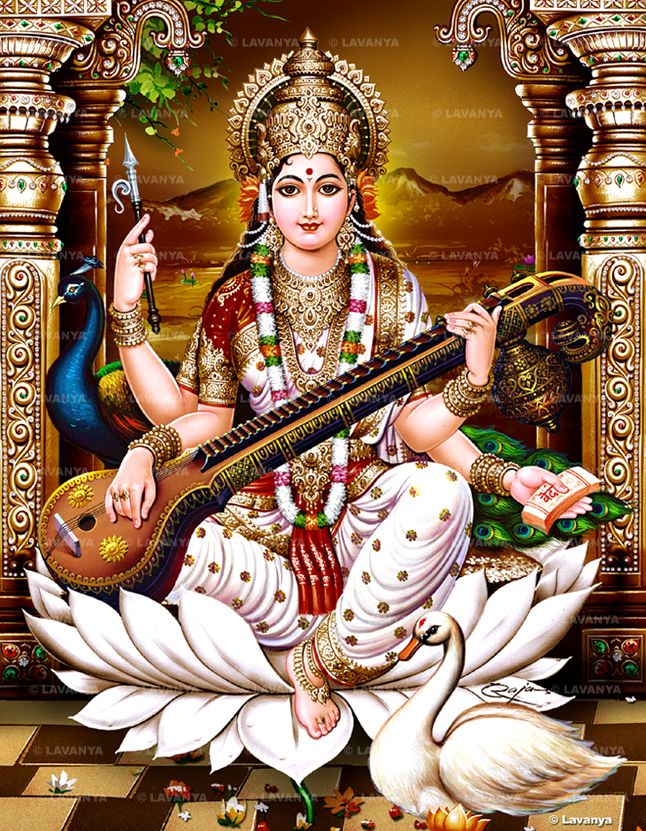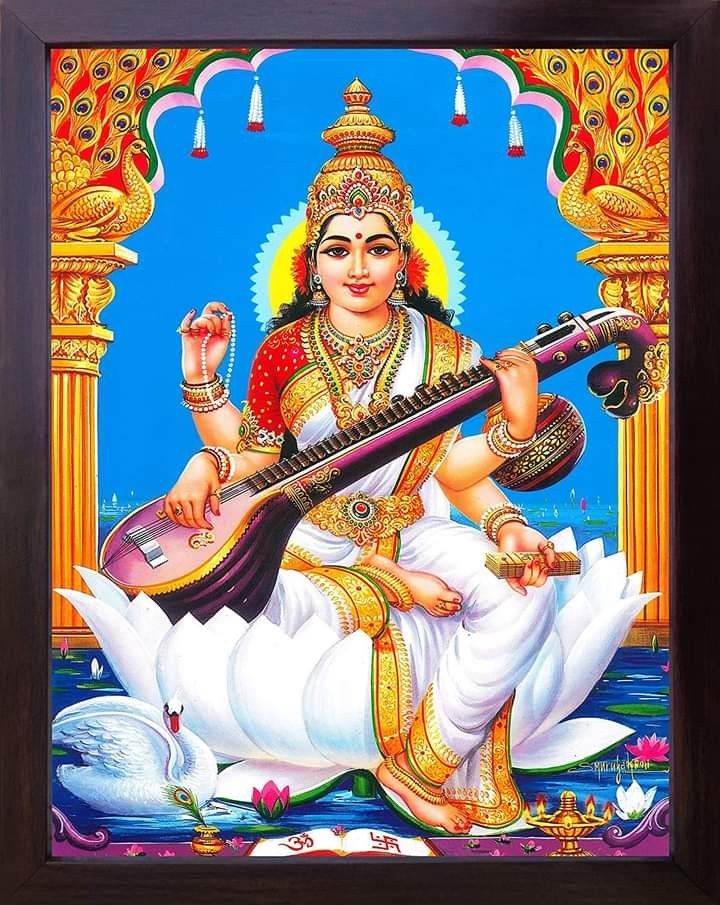Saraswati Goddess and Parvati Relationship
Introduction
Respected within the rich tapestry of Hindu mythology, Saraswati represents the divine essence of knowledge, wisdom, and the creative arts. But Saraswati is also intimately linked to the basic ideas of sound and music, the Saptaswaras, or the seven main notes that define Indian classical music, therefore her impact goes much beyond the boundaries of academic interests. This complex link between the goddess and the cosmic symphony she oversees provides a great window into the interdependence of the spiritual and creative spheres.
The Saptaswaras : Revealing the Cosmic Harmony
Not only are the seven main notes, Sa, Re, Ga, Ma, Pa, Dha, and Ni, musical creations, but they also are thought to be the actual building blocks of the cosmos. Each with its own particular frequency and meaning, these seven notes are supposed to be the expressions of the divine energy controlling the planet.
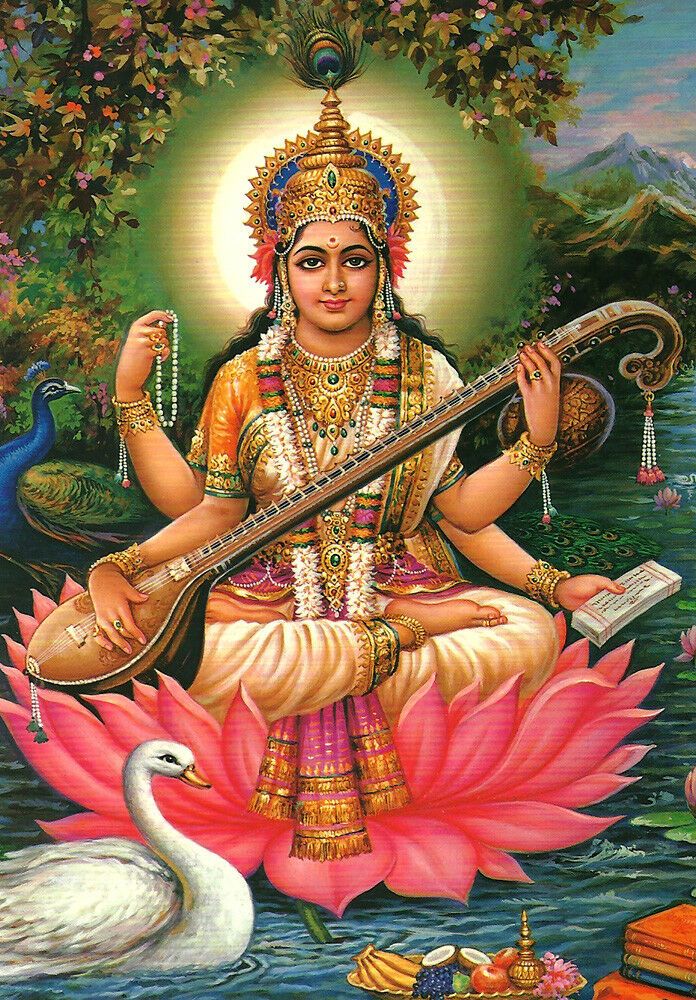
The symbolic importance of the Saptaswaras
- Sa (Shadja) : It is the basis upon which the whole musical system is constructed: representing the primal sound, the fundamental note from which all others flow.
- Re (Rishabha) : Is connected with the sun, the giver of life and nutrition, hence signifying the life-giving power.
- Ga (Gandhara) : Linked to the intellect, creativity, and communication ability, Ga (Gandhara) symbolizes the element of air.
- Ma (Madhyama) is the fundamental note that balances the musical scale by modeling the ideas of harmony and balance.
- Pa (Panchama) stands for the element of ether and is connected with the vast and all-encompassing character of the divine.
- Dha (Dhaivata): Representing the element of water, Dha is connected to the flux of life and the emotional flow.
- Ni (Nishada) : Associated with stability, foundation, and the expression of the divine in the physical world, Ni (Nishada) stands for the element of earth.
The cosmic relevance of the Saptaswaras
Though each Saptaswaras reflect a basic element of the divine and are not only musical notes; they are thought to be the actual building blocks of the universe. Said to be the manifestations of the primordial sound, the Nada Brahma, from which the whole cosmos was born, these seven notes
Hindu theology holds that the Saptaswaras are intimately associated with the seven celestial bodies—the Sun, the Moon, the five visible planets—as well as the seven chakras, the energy centers within the human body. With the Saptaswaras acting as the link between the spiritual and the material worlds, this complex web of correspondences emphasizes the great interdependence of the microcosm and the macrocosm.
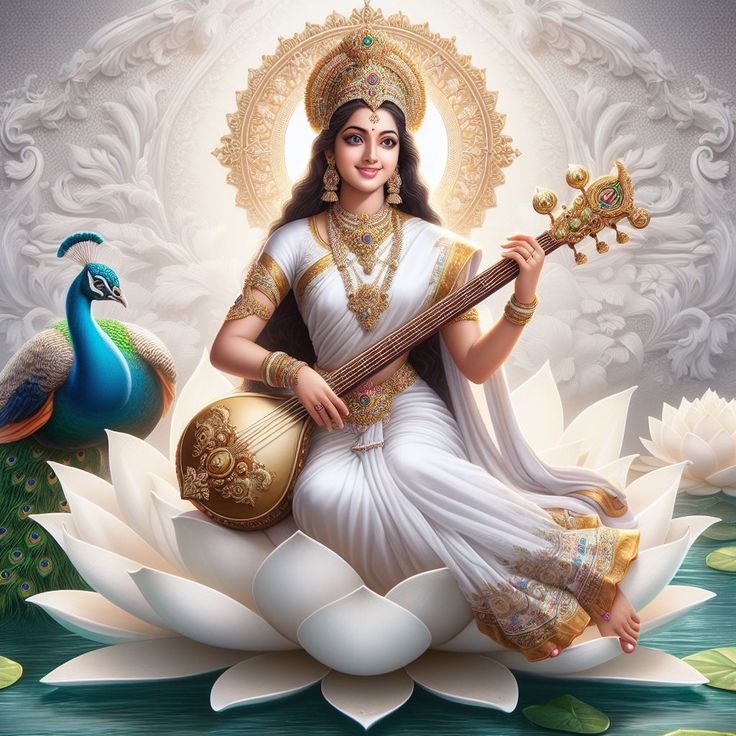
Saraswati: Lady of the Saptaswaras
Saraswati’s relationship to the Saptaswaras is both deep and varied since she is the goddess of knowledge, wisdom, and the arts. She is adored as the Shakti that energizes the universe and generates the cosmic symphony, therefore reflecting the divine creative power.
Saraswati’s Iconography: Saptaswaras
Often showing Saraswati carrying a veena, a stringed musical instrument, her iconography reflects her knowledge of the Saptaswaras and her capacity to control sound. With seven strings, the veena is said to reflect the seven notes of the musical scale. Saraswati’s deft use of this instrument is evidence of her control over the cosmic harmonies.
Saraswati also frequently appears reclining on a white lotus, a flower with great Hindu symbolism. The lotus, which can rise from the muck and blossom in perfect beauty, symbolizes the transforming power of the Saptaswaras, which may uplifting the human soul from the mire of ignorance and lead it toward enlightenment.
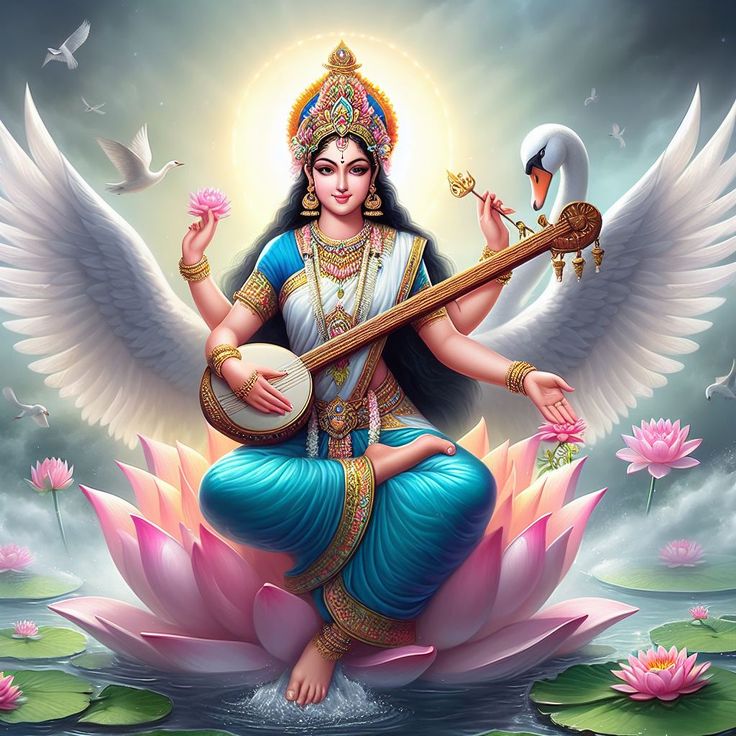
Saraswati’s contribution to the Vedas’ creation
Hindu religion regards Saraswati as the goddess who created the Vedas, the ancient holy books upon which Hindu philosophy and spirituality are based. The Vedas are thought to represent the Nada Brahma, the primordial sound from which the universe was formed, and Saraswati’s part in their appearance is evidence of her control over the Saptaswaras.
The Puranas, the ancient Hindu mythical books, hold Saraswati as the goddess who taught the sages and seers the knowledge of the Vedas, therefore allowing them to accept and forward the divine wisdom contained within the hallowed teachings. Saraswati’s relationship with the Vedas emphasizes the goddess’s vital part in the dissemination and preservation of the cosmic wisdom embodied in the Saptaswaras.
Hindu Rituals and Worship’s Saptaswaras
Hindu rituals and worship revolve upon the Saptaswaras, hence Saraswati’s relationship to these seven notes is intricately entwined with the fabric of these hallowed activities.
The Saptaswaras’ Significance in Hindu Rituals
Often vital parts of Hindu temples and during different religious rites are the chanting of the Vedic mantras and the use of musical instruments. These sound-based techniques are thought to be endowed with the power of the Saptaswaras, which are supposed to interact with the very fabric of the universe and call out divine blessings.
Believed to be connected with the seven chakras, the energy centers within the human body, the Saptaswaras are also It is believed that reciting particular mantras or playing particular musical notes can help to balance and stimulate these chakras, therefore enabling spiritual development and inner harmony.
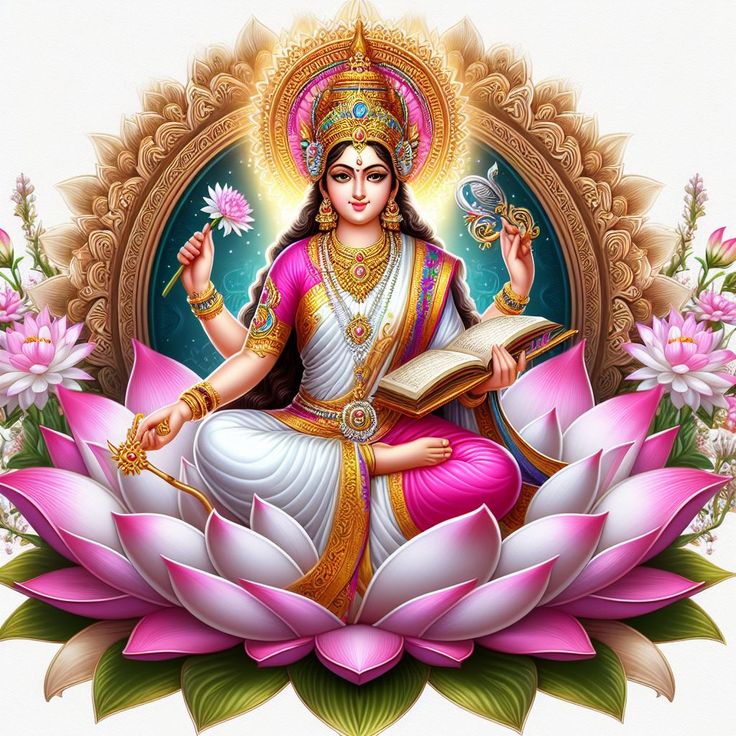
Saraswati’s Appearance in Hindu Festivals and Celebrations
Especially clear is Saraswati’s relationship to the Saptaswaras during the holidays and events devoted to her devotion. Of these, the most well-known is Vasant Panchami, a springtime celebration honoring the goddess.
Devotees of Vasant Panchami frequently participate in the performance of ancient Indian dance forms, the recital of Saraswati mantras, and instrument playing. Invoked to seek the goddess’s graces for knowledge, creativity, and creative expression, these customs are thought to be endowed with the power of the Saptaswaras.
Saptaswaras and the Spiritual Awakening
Apart from their cultural and ceremonial importance, the Saptaswaras are also supposed to be the secret to spiritual enlightenment and metamorphosis. Saraswati’s command of these seven notes is considered as a mirror of her capacity to control the divine energies guiding the earth and the human experience.
The Saptaswaras and the Seeking of Enlightenment
The Saptaswaras are intimately linked in Hindu spiritual traditions with the idea of Nada Yoga, a practice aiming at developing inner silence and investigating the primal sound. Nada Yoga practitioners try to reach a level of increased awareness and spiritual transcendence by means of the meditative chanting of particular mantras or the focused listening to particular musical compositions.
Saraswati’s relationship to the Saptaswaras is viewed as essential to this search since the goddess is supposed to be the manifestation of the divine creative power generating the cosmic symphony. Devotees can open the path to greater spiritual knowledge and the realization of the ultimate truth by matching themselves with the vibrations of the Saptaswaras under Saraswati’s direction.
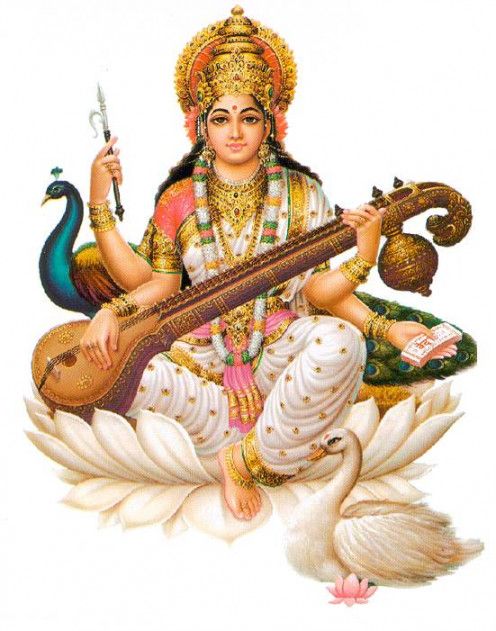
The Saptaswaras and Harmony of the Self
Furthermore thought to be the key to the harmonizing of the personal self with the cosmic order are the Saptaswaras. To produce a beautiful musical piece, the seven notes must be in perfect balance and harmony; similarly, so too must the several facets of the human being – the physical, emotional, cerebral, and spiritual – be in harmony and balance.
Saraswati’s mastery of the Saptaswaras is evidence of her capacity to lead her followers into this harmonic condition, therefore transcending the constraints of the ego and allowing them to interact with the divine spirit that pervaded the planet. By use of music, chanting, and meditation, people can learn to tune themselves to the rhythms of the cosmos, therefore enabling a deeper feeling of purpose, fulfillment, and spiritual illumination.
Conclusion
Inextricably connected to the Saptaswaras, the seven main notes underlying Indian classical music, Saraswati is the goddess of knowledge, wisdom, and the arts. This great relationship reflects the deep spiritual and cosmic relevance these seven notes carry inside the Hindu tradition, not only a cultural or artistic construct.
By means of her mastery of the Saptaswaras, Saraswati is said to be the manifestation of the divine creative power generating the cosmic symphony, the Nada Brahma existing in the very fabric of the universe. Under the direction of the goddess, believers can open the door to deeper spiritual insight, harmonic self-aligning, and final realization of the divine by matching themselves with the vibrations of these seven notes.
Ultimately, Saraswati’s relationship to the Saptaswaras is evidence of the great interdependence of the spiritual and artistic spheres as well as the goddess’s guidance of mankind toward enlightenment and the realization of the cosmic harmony central to all life.
#Parvati #god #Parvathi #godParvathi #saraswati #goddess #saraswatigoddess
